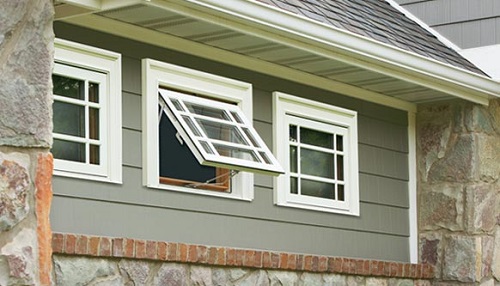Fresh air
The term ‘fresh air’ is commonly used to refer to air that is outside (or from outside) a building or enclosed space, as opposed to that which is inside. In order to ensure a good supply of fresh air, buildings need to be properly ventilated. Sometimes air that is not fresh is referred to as 'stale air'.
The provision of fresh air in a building is important to occupants’ wellbeing and has several benefits, including:
- Increasing oxygen availability and removing carbon dioxide.
- Maintaining a comfortable temperature.
- Enabling optimum brain functioning, increasing energy levels and improving concentration.
- Diluting and removing odours.
- Helping to moderate internal humidity.
- Reducing the accumulation of moisture, bacteria, dust, smoke and other contaminants.
Insufficient fresh air can result in occupants feeling tired, experiencing headaches, irritated eyes, and so on.
The Workplace (Health, Safety and Welfare) Regulations 1992 require that an employer does what is needed to make sure that every enclosed workplace is ventilated by a sufficient quantity of fresh or purified air. It states that the fresh air supply rate should not normally fall below 5-8 litres per second, per occupant. The appropriate rate should be decided by several factors, such as the amount of floor space per occupant, the work activity, possible sources of airborne hazards, and so on.
For more information see: Ventilation.
[edit] Related articles on Designing Buildings
- Air.
- Air conditioning.
- Air quality.
- Air Quality Taskforce.
- At a glance - Indoor air quality.
- Bringing a breath of fresh air to the design of indoor environments.
- Building related illness.
- Clean indoor air for healthy living - New air filter standards.
- Human comfort in buildings.
- Indoor air quality.
- Sick building syndrome.
- Re-circulation air.
- Stale air.
- Thermal comfort.
- Ventilation.
Featured articles and news
Wellbeing in Buildings TG 10/2025
BSRIA topic guide updates.
With brief background and WELL v2™.
From studies, to books to a new project, with founder Emma Walshaw.
Types of drawings for building design
Still one of the most popular articles the A-Z of drawings.
Who, or What Does the Building Safety Act Apply To?
From compliance to competence in brief.
The remarkable story of a Highland architect.
Commissioning Responsibilities Framework BG 88/2025
BSRIA guidance on establishing clear roles and responsibilities for commissioning tasks.
An architectural movement to love or hate.
Don’t take British stone for granted
It won’t survive on supplying the heritage sector alone.
The Constructing Excellence Value Toolkit
Driving value-based decision making in construction.
Meet CIOB event in Northern Ireland
Inspiring the next generation of construction talent.
Reasons for using MVHR systems
6 reasons for a whole-house approach to ventilation.
Supplementary Planning Documents, a reminder
As used by the City of London to introduce a Retrofit first policy.
The what, how, why and when of deposit return schemes
Circular economy steps for plastic bottles and cans in England and Northern Ireland draws.
Join forces and share Building Safety knowledge in 2025
Why and how to contribute to the Building Safety Wiki.
Reporting on Payment Practices and Performance Regs
Approved amendment coming into effect 1 March 2025.























